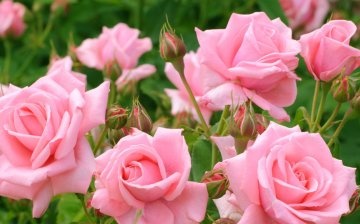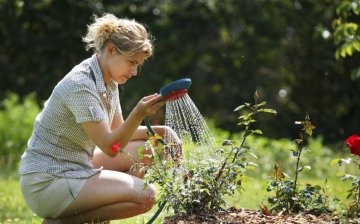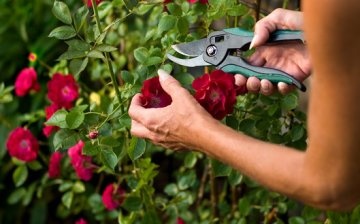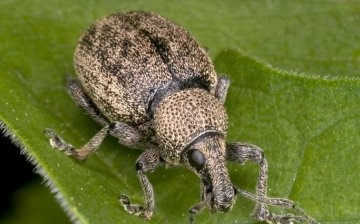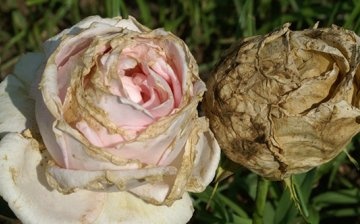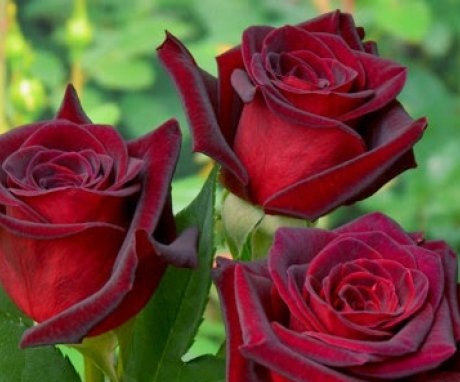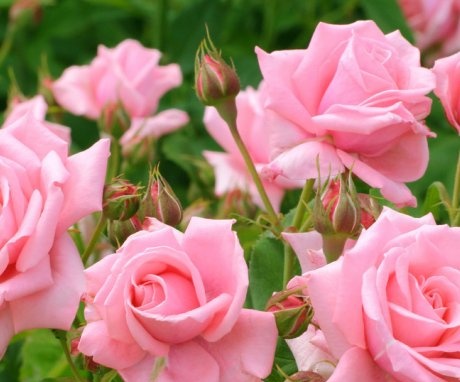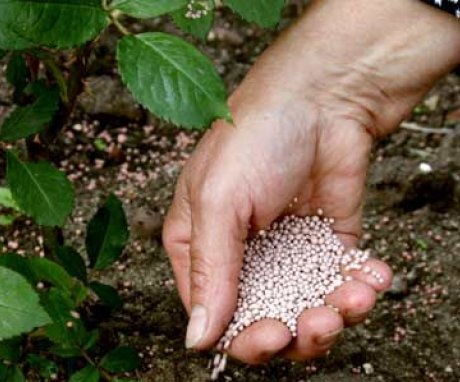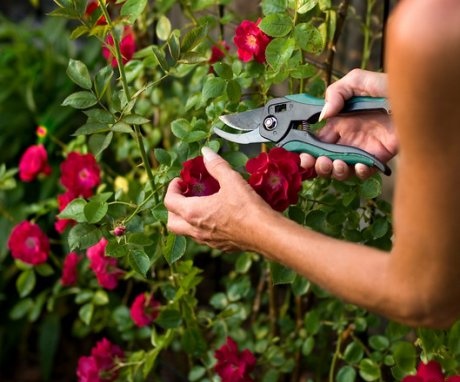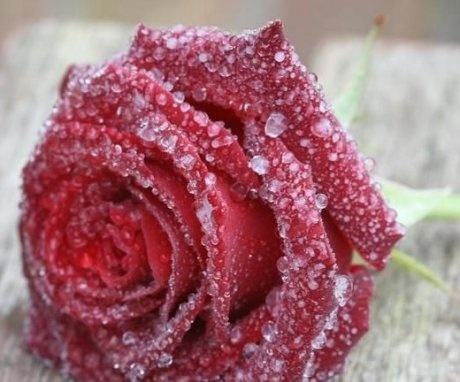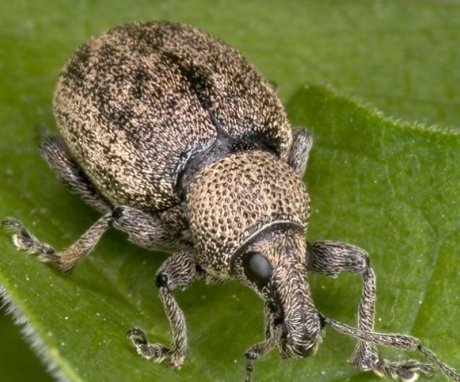Taking proper care of your roses will help you grow beautiful flowers.
Without the queen of flowers roses, you cannot find now even the smallest personal plot not only in the south of the country, it has become commonplace for the northeastern part of it, especially since they offer both miniature bushes and large specimens for gardeners.
Content:
- Popular varieties of roses for the garden: description and benefits
- The role of soil and lighting in growing roses
- Watering rules
- Top dressing for the queen of the garden
- Pruning rose bushes
- Preparing for winter
- Pests: control and prevention
- Flower diseases: fight and prevention
Popular varieties of roses for the garden: description and benefits
the Rose refers to purely garden plants, since this beautiful flower is the result of selection work, and in nature only its modest relatives of the dog rose family are found. Even in the ancient world, about ten varieties of flowers were known, which served as an adornment not only for the gardens of the nobility, but for the hair of famous women. In our time, breeders have bred tens of thousands of varieties of a magnificent flower.
The most common types are:
- By crossing remontant and tea roses, as well as these hybrids with each other, varieties are obtained that do not even reach 80 centimeters in height, with large leaves and neat inflorescences of various shades. The first variety of this species was La France. Hybrid tea bushes smell fragrant until the very frost with short breaks up to a crescent to rest. The most fragrant specimens include Ambiente, characterized by a long and lush flowering, yellow Sani Sky, especially suitable for bouquets, and Elbflorenz with lemon scent and fuchsia flowers.
- Climbing rose varieties amazingly suitable for decorative landscaping of buildings, gazebos, and hedges... Among them, it is distinguished by abundant flowering and flexible shoots of Gella with snow-white roses, and strong, with soft pink flowers, the bushes of Camelot are resistant to cold and disease.
- Creeping flexible branches of Max Graf with large flowers, miniature Avon are a ground cover species characterized by arcuate shoots with tiny foliage. They are good for decorating small hills, rock gardens and garden rockeries. Some varieties of this species are even grown in pots.
- For group plantings and hedges are suitable multi-flowered Floribunda roses, which are distinguished by a long flowering, have different forms of bushes from low to vigorous. Instances of this group are attracted by all kinds of shades of colors, their peculiar structure, as well as good tolerance to low temperatures and resistance to diseases... The Galaxy rose, as it blooms, turns from yellow to pink aristocrat. Tall bushes of varieties Georgette and Lilly Marlene are simply gorgeous in their unique flowering.
- Miniature types of flowers in the rose garden are more resistant to any unfavorable living conditions and surprise with unusual shades: green (Green Ice), bluish (Lavander Jewel).
For about seventy years, remontant roses were the queen of gardens, but now their glory has sunk, although many gardeners prefer varieties of this group, especially since there are several thousand of them.
Fans of tea roses are attracted by the unusual shape of the flower and the variety of colors. Especially famous are the buds with pastel, golden and burgundy shades, and their smell is simply amazing. Not to list all the species diversity of rose flowers: French, English, Damask, patio - each group is good in its own way, has certain features and is waiting for its fan-gardener.
The role of soil and lighting in growing roses
Many people find roses finicky for cultivation plant and are afraid to breed them. This is not so dangerous, but it is necessary to comply with some requirements, first of all, to the soil for seedlings.
It is best to plant rose bushes in well-lit areas with protection from the wind. It is necessary to find a place in the garden where there is a compromise between absolute illumination and shade, since the direct rays of the sun can burn the plant, and twilight will cause bouts of uncontrolled growth and enlargement. pests... For flower bushes, low trees are suitable for neighbors, giving shade and protecting from the wind.
The soil for planting roses should be fertile, not too wet, with neutral acidity.
If the soil is acidic, then chalk, lime, wood ash, which contains calcium, are introduced to neutralize it. During the off-season, they dig a deep hole for seedlings about a meter deep, filling it with compost or rotted manure. And after planting roses, you must comply with the requirements for leaving behind them.
Watering rules
The heat-loving garden rose is always happy with the temperate watering, especially not on a hot afternoon, but on a cool morning or evening. Too zealous procedure for watering the bushes can lead to defeat powdery mildew, which is difficult to get rid of.
How many times to water a rose depends on the length of the growing season, on the structural ability of the soil to retain moisture, on the temperature and humidity of the surrounding air. In spring, one watering a week is enough for rose bushes, and in autumn it is almost unnecessary. There is no need to rely on sprinkling irrigation: it will only increase the tendency to infection with diseases.
Top dressing for the queen of the garden
Roses planted in open ground are demanding for regular application fertilizers, among which the main one is horse manure, which is necessary to enhance the growth and flowering of bushes. They usually use rotted manure, which, after mixing with the ground, is placed under the stems of the plant.
A spoonful of calcium nitrate in a bucket of water or water infusion mullein will support the rose that has begun to bloom: the buds will hold on to the stems for a long time, without falling off.
After fertilizing, in order to mitigate its effect on roses, the bushes must be watered abundantly.
Chicken droppings fertilizing flowers is not recommended, as this can cause irreparable harm to them root system up to its destruction. If you add rotted cow dung or compost to the bushes in the fall, then in the spring you just need to feed it with nitrogen contained in a tablespoon of urea. Of mineral fertilizers Agricola is effective for flowering plants and wood ash. Top dressing is an important part of caring for roses.
Pruning rose bushes
The most appropriate time for trimming roses will be like this when the buds have not yet opened, and frosts are no longer expected. With a close examination of each bush, the branches that rushed inward are removed: this will allow the air to better ventilate the flowers.
All damaged, dried branches, non-viable shoots are removed.
Roses will be able to develop and bloom normally if, when pruning, they leave as many branches as the roots can feed. The branches are cut with a sharp knife obliquely above the bud from five to eight millimeters. After that plants sprayed with a solution of copper sulfate or Bordeaux liquid, and sections large in diameter are covered with garden var.
There must be reasons for the procedure for pruning rose bushes:
- Removing the old branches, the bush is renewed, because it will begin to give life to the shoots that have just appeared.
- The bushes are pruned in order to determine what flowers and in what quantity the gardener wants to see them: many small or few single, large ones. Leaving 3-4 buds on each branch when pruning helps to develop strong shoots with large flowers that are good in bouquets. To increase the number of flowers, 3-6 buds are left on the branches.
- In order to give a harmonious shape to the bush, branches are cut, which interfere with the creation of an invented beautiful image. If suddenly there is a decrease flowering and plant growth, then the pruning procedure is intensified next year.
- Timely pruning of rose bushes serves as a stimulant for their further development and flowering.
Preparing for winter
Roses are classified as perennial plants, so it is necessary to carefully prepare them for wintering, especially this applies to large and multi-flowered specimens. It is not worth insulating the plants too early, as this is dangerous for the roots.
The optimal time is early November.
And before that, all the leaves of the plant must be cut off so that the larvae do not overwinter in them. pests, and treat the bushes with any antifungal drug... Tall rose bushes need to be bent with care to the ground, sprinkled with dry leaves, earth or peat, and on top with polyethylene film or spandbond in two layers. When warm spring days come, the plants are freed from a warm shelter and prepared for further growth.
Pests: control and prevention
Appearances pests it is almost impossible to avoid on rose bushes, so you need to know the enemy by sight in order to find effective ways to deal with them:
- Most often, a spider mite that appears on the leaves of a young plant destroys them, sucking out the juice and covering it with the thinnest cobweb. If you look closely, you will notice reddish or brownish dots wiggling. There are many drugs for the prevention and control of ticks, among the effective ones are Arrow, Neoron or Diazanon. Of the natural methods for destroying pests, spraying with garlic and tobacco infusions is suitable. Dusting roses with dry mustard or wood ash and even spraying the bushes with hot water under pressure also gives positive results.
- Any insecticidal preparations will cope with the scabbard pest, which sticks around the leaves with brown plaques and leads to their falling off.
- Rose aphid is found on young shoots and buds, its colonies are visible to the naked eye. All parts of the plant are covered with sticky secretions of aphids, on which the fungus loves to settle. To exterminate the pest sprayed bushes with soapy water or tobacco infused with water.
- The rosewood sawfly eats young shoots and buds, while the leaves of the plant are deformed. Only drugs that include karbofos will help.
By carefully monitoring the development of rose bushes, taking preventive measures, you can avoid being damaged by pests.
Flower diseases: fight and prevention
Among the diseases of roses, both fungal and viral lesions are detected:
- If the color of leaves, stems, buds changes to grayish or looks like a whitish bloom, then this is powdery mildew caused by the fungus Peronospora. For therapy, you need to remove all damaged parts of the plant and treat with an antifungal drug 2-3 times.
- The appearance of orange or brown pustules on the back of the leaf, protruding in the form of warts, indicates an infection with a rust fungus. The development of this ailment is facilitated by high air humidity during hot weather. In order to combat the fungus, the leaves affected by it are removed and sprayed with special solutions.
- The appearance of spots on the leaves in the second half of the growing season is a symptom diseasescaused by either a fungus or a virus. And preparations containing copper or sulfur will help to cope with the disease. Having processed the bushes and the ground around them 2-3 times, you can achieve the healing of the flower.
- With a viral infection, yellow stripes or spots appear on the leaves, and the bacterial cancer begins to rot the roots and the lower part of the plants. There are no suitable chemicals for these serious diseases - it is better to destroy the bush so that the neighbors do not get infected.
Almost all rose diseases are associated with high humidity, poor ventilation of the rose garden. Creating comfortable conditions for the queen of the garden will help to avoid them.
More information can be found in the video.





